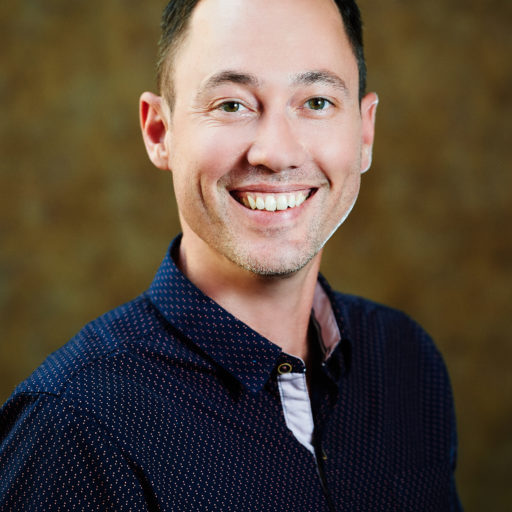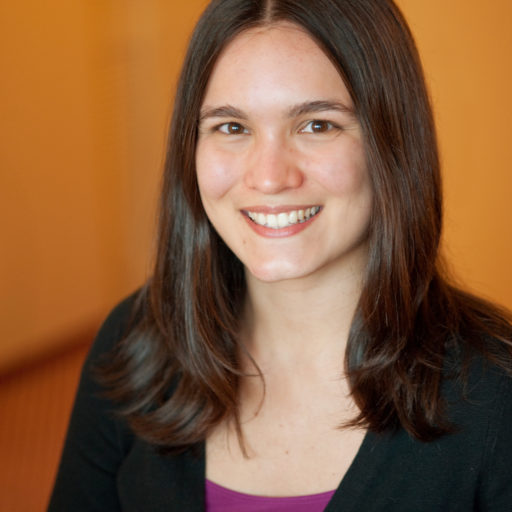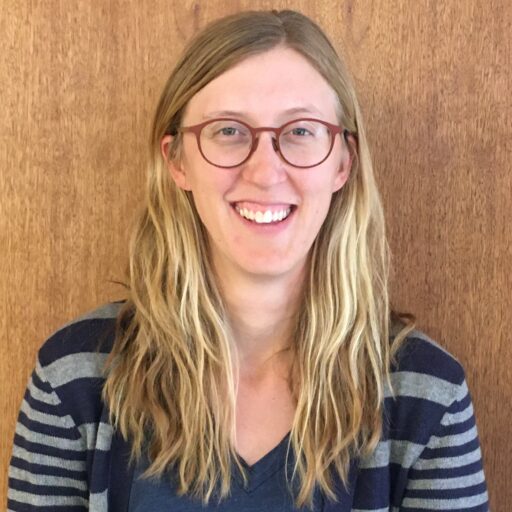Why study Spanish abroad?
We all work in schools where being able to communicate in Spanish is helpful. We all teach high school math to Spanish-speaking English learners (EL students) in the Bay Area in California, where there are many Spanish speaking immigrants. Rick and Katie teach classes of newcomer students, and Kim has mixed classes comprised of native English speakers, English learners who have been in the U.S. for several years, and newcomers. Many of our students speak Spanish as their primary language, and we interact with parents whose primary language is Spanish.
The possibility of communicating with students and parents in their primary language was a major motivation to study Spanish. However, we all felt that studying in a classroom setting didn’t quite work for us. We picked up some vocabulary and grammar, but weren’t comfortable communicating in Spanish. We only rarely understood a sentence spoken at a normal pace and couldn’t really put together a coherent sentence to say what we actually meant. With this in mind, we each decided to submit a proposal to KSTF for a professional development grant to travel to Xela, Guatemala to study Spanish at La Democracia Spanish School (lademocracia.net)
La Democracia is a woman-run Spanish school where students can study for any length of time. Rick, Kim, and Katie each spent three or four weeks there in different summers (2016, 2015, and 2010, respectively). Students are paired with a tutor and taught in a one-on-one setting. Any level of prior Spanish knowledge is welcome—Rick had no prior Spanish knowledge, Katie had two quarters of college Spanish, and Kim had studied Spanish in high school. At the school, students work with their teacher for about five hours a day and then have the remainder of the day to explore Xela or go on cultural excursions. La Democracia usually organizes several afternoon excursions a week like visiting local pueblos or amazing hot springs. There are also weekend activities, like hikes to local volcanos or extended trips of nearby cultural sites.
One of the highlights of the La Democracia school is the home-stay. Students that study at La Democracia are placed with a local host family. The host family provides housing, meals, and a priceless exposure to the local culture of Xela.
Is it worth it? YES! After three weeks of studying, Rick is comfortable speaking in present tense and knows the basics of past and future tense verbs. Kim is more confident about communicating in Spanish and is learning about more nuanced phrasing. Katie speaks with students and parents regularly, mostly in present tense, and feels comfortable translating in meetings. However, second language proficiency isn’t the only take-away. The benefit of being immersed in a second culture is cogent for any teacher working in a diverse school setting.
Why choose Spanish immersion rather than classes?
Studying in Guatemala with a homestay offered the opportunity to learn through an immersive experience. Being surrounded by Spanish extended well beyond past classroom experiences, where we reverted to speaking in English as soon as we walked out the door. We were pushed to communicate in Spanish, even when we weren’t sure about what we were saying, simply because we needed to communicate about something and English wasn’t an option. Asking for small bills at the money exchange, asking about unfamiliar food at a restaurant, and sending laundry to the lavanderia all happened in Spanish. This pushed us to learn more, faster, and in a much deeper way.
The grammar, vocabulary, and phrases we learned were connected in a more meaningful way—whether it was talking through a recipe with our homestay mothers, watching Intensamente (Inside Out) or Toy Story 3 in Spanish without subtitles, learning about the daily lives of the people around us, or taking a bus alone to another city. This experiential learning really expanded our ability to communicate in Spanish.
Studying in Guatemala with a homestay offered the opportunity to learn through an immersive experience. Being surrounded by Spanish extended well beyond past classroom experiences, where we reverted to speaking in English as soon as we walked out the door. We were pushed to communicate in Spanish, even when we weren’t sure about what we were saying, simply because we needed to communicate about something and English wasn’t an option.
With one-on-one lessons, we were able to learn at our own individual pace and focus on areas that were important to us. We had the opportunity to talk through points of confusion and some nuances of choosing one phrasing over another. We could ask about vocabulary and phrases specifically related to teaching, and found it much more effective to ask a native speaker than to guess from the list of 10 words we might find in an English-Spanish dictionary. We were even able to request an entire lesson focused on what we could say during a phone call to a student’s home in Spanish. In Kim’s case, she started with what she wanted to say and how she would phrase it, and ended up with really helpful feedback on how to effectively communicate those ideas in Spanish.
Impact on Teaching: Kim’s Spanish Communication
My main reason for going to study Spanish in Guatemala was to be able to communicate with my students and their families in Spanish. Sure enough, learning Spanish has been really helpful for the little things that come up in teaching.
When I call a student’s family, language is less of a barrier now. Either through the basic Spanish I know, or through a combination of English and Spanish, I can talk about how a student is doing in class and ask questions that will help me improve how things go in class. I still need to ask someone to help translate for more complicated conversations, but I can call home for the more frequent things—something a student did well in class, an assignment they missed, or when they should come see me for help with a particular topic.
Personally, I would consider the in-person conversations the most important benefit to learning Spanish. At back to school night and at parent meetings, my conversations in Spanish can go beyond a quick greeting. I have been able to talk through a student’s progress and areas for improvement, and it means a lot to be able to communicate directly with parents. For example, in one conversation, a student’s mother stopped her son from translating so we could have a conversation, even in the very slow and basic Spanish I could pull together, and I could tell it was more important to her that we speak without translation than to catch every little detail. And when the student protested, “No, now she thinks you’re saying I talk a lot in class!” I was able to confirm that yes, I was telling his parent that he does a lot of great work but has too many side conversations.
I still need to ask someone to translate for the more complicated or delicate conversations, but even then I can follow most of the conversation that happens in Spanish. Students and parents are able to pull together the words much faster and more elegantly than I can at this point, but I am able to follow along and repeat any important parts that were missed in the translation. Though I wouldn’t have a student translate anything where they might be tempted to change the information, it is helpful to double-check and add to what they’re communicating when I ask them to translate or explain something in Spanish.
Impact on Teaching: Rick’s Experience of Learning a New Language
One of the classes I teach is algebra for students who have immigrated to the United States. Many, but not all, of these students are from Central America. Thus, knowing basic Spanish is helpful.
While in Guatemala, however, I learned more than just basic Spanish. I also learned what it is like to live in a country where the primary language is not my own. Menus, food labels, conversations with the cashier at the grocery store and announcements at the airport and bus station were all in Spanish. And, while the people in Xela are very friendly, most locals do not speak English. Thus, I got to experience the frustrations and anxiety that many of my EL students must feel. I have a new appreciation for the courage and resilience my EL students have: what is routine, and even mundane, for English speakers can be a struggle for EL students. Taking the bus to school, going to the school cafeteria, and interacting with employees at convenience stores and fast food locations all happen in a language they don’t speak fluently.
While in Guatemala, however, I learned more than just basic Spanish. I also learned what it is like to live in a country where the primary language is not my own.
This year, I am using my experience in Guatemala to inform my practice as it relates to EL students. For example, while in Guatemala, I often found myself exhausted in the afternoon after having spent the morning in class speaking Spanish and lunch speaking Spanish with my host family. Just trying to understand the basic idea of what someone is saying in a language which you are not proficient is mentally exhausting. Now, when my EL students are not engaged on a Friday afternoon during the final period of the day, I know it is because they’ve already given 110% just trying to access and understand what’s going on around them during the week. Instead of a lesson or task, I now use Friday afternoon for students to engage in an interactive game or get-to-know you activity.
Impact on Teaching: Katie’s Sense of Connection
Many of my students are immigrants from Central America: Mexico, Honduras, El Salvador, and Guatemala. I, however, am from Minnesota, land of snow, ice, hotdish, and canoes. The gap between my experiences, my life, and my understanding of the world and my students is wide and deep. I often question what exactly I bring my students, and who I am to stand up in front of them every day. I don’t want to pretend that going to Guatemala for three weeks suddenly made me a cultural ambassador, able to bridge cultural differences with a wave of the hand, but it made a big difference in my practice in two ways, as well as those described by Rick and Kim above.
The first is that I have a mental image of Guatemala that I can draw on when I am talking to students about where they are from. They have grass and trees like us, I’ve ridden on their buses, I’ve bought pastries with quetzales, I’ve gotten caught in the Guatemalan rain, I’ve watched Toy Story 3 at the Hyperpais mall in Xela. Guatemala doesn’t feel like another planet to me. When I speak with students from Central America, they don’t feel as “other” to me because I can imagine where they come from. The distance between us feels smaller, and it’s easier for me to see them as people just like me.
The second is that I can make a connection with students much faster. I share as soon as possible with new students from Central America that I have visited Guatemala (and went to Mexico on a separate trip). I exclaim about how beautiful the country is (usually something about how I had never seen volcanoes before), and talk about the cities I visited. If I have time, I tell my story about bargaining a price up in a market because I wasn’t very good at numbers larger than 20. Guatemalan students talk about how close or far those cities are from their own, and Honduran and El Salvadoran students tell me I should visit their own beautiful countries. While this clearly doesn’t make me some sort of honorary Guatemalan compatriot, it allows me to connect with students on their terms, not mine. They are in a new country, in a new school, surrounded by new people, and getting to talk about something familiar, even for a moment, can be a blessing.
Our Advice: Getting Started
Decide where and when you want to go study Spanish. Guatemala is a great place to learn Spanish because people tend to speak more slowly and with less slang than other countries, and the programs there tend to be less expensive. Xela is a less touristy city where you can get a more immersive experience. There are many different schools to choose from, and you should do your research to find the right fit. At this point, at least five KSTF Fellows have attended La Democracia, so we are strengthening a good relationship there.
We recommend at least two weeks at a Spanish immersion program, so that you really get the chance to build up some momentum in developing your Spanish skills and also get to know the local area and culture. Any amount of time can be helpful, but keep in mind that you should expect a full day or so of travel on either end, due to travel time on buses and planes and the time zone differences.
Whether through relating to their country of origin, empathizing with the struggles of learning a new language, or communicating in their native language, we now build stronger connections with our students.
Afterwards
Putting the Spanish we learned to good use is the most important thing we’ve done after studying in Guatemala. It can be difficult to maintain Spanish skills when you’re once again surrounded by English speakers, so Meetup (meetup.com) groups or classes can be really helpful for maintaining Spanish skills between conversations with students and their families. La Democracia also offers online classes via Skype for around $10 per hour if you want to continue your studies remotely. And if you ever need a conversation partner, let’s schedule a Google Hangout!
By spending two weeks or more in a Spanish immersion program, you will definitely learn basic Spanish. However, spending time in another country also imbues a multi-cultural competence that is useful in a diverse school setting. Whether through relating to their country of origin, empathizing with the struggles of learning a new language, or communicating in their native language, we now build stronger connections with our students. Our experiences in Xela left us with a clearer sense of our own cultural identities and how, in our classrooms and schools, our identities intersect with our students’. In turn, this has helped us be more effective with students from cultures different from our own. While traveling to Guatemala to learn Spanish may seem like an atypical professional development, it has improved our teaching practices on more levels than we could have foreseen. Definitely well worth the trip!
Rick Barlow is a 2013 Knowles Teaching Fellow who teaches freshman algebra and algebra for English Learners at Fremont High School in Sunnyvale, CA. Rick can be contacted at rick.barlow@knowlesteachers.org.
Kim Hartung is also a 2013 Knowles Teaching Fellow who teaches algebra at Madison Park Academy in Oakland, CA. Kim can be contacted at kimberly.hartung@knowlesteachers.org.
Katie Waddle is a Knowles Senior Fellow who teaches math for English learners at San Francisco International High School in San Francisco, CA and is an associate editor for Kaleidoscope: Educator Voices and Perspectives. Katie can be contacted at katie.waddle@knowlesteachers.org.







